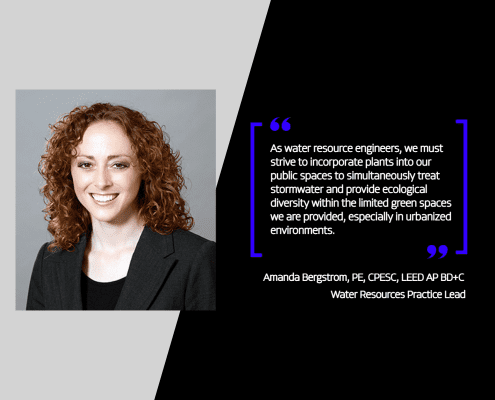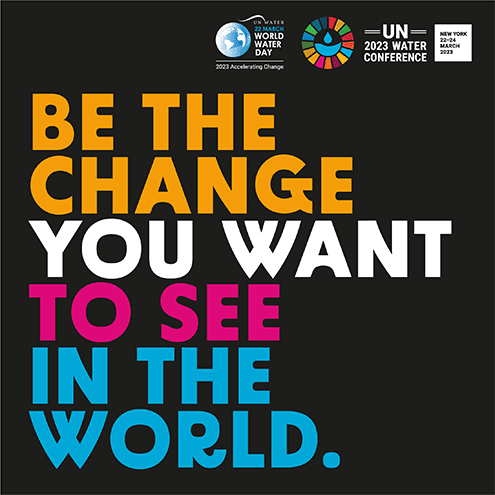World Water Day 2023
ACCELERATING CHANGE
Since 1993, World Water Day has been commemorated on March 22nd every year to highlight the importance of freshwater. It also aims to raise awareness of the billions of people worldwide who do not have access to safe water.
This year’s theme is Accelerating Change. Rani’s Water Resources Practice Lead, Amanda Bergstrom, was asked a few questions to learn how she helps to accelerate change within her role.
Amanda Bergstrom, PE, CPESC, LEED AP BD+C
Water Resource Practice Lead | 20 Years of Experience
What do you enjoy most as a water resources engineer?
I love using plants in stormwater design to increase ecological biodiversity, create pollinator habitats, and increase tree cover and species diversity, especially in urban areas. I also find personal satisfaction in correcting areas experiencing regular flooding, which can allow communities to safely utilize publicly and privately owned spaces for years to come.
What solution(s) has been provided on Rani projects to help solve the water crisis?
Rani’s work on transportation projects throughout Minnesota, particularly in the City of Minneapolis, has included stormwater pollution prevention and green stormwater infrastructure design to reduce runoff and contaminant load contributions from the transportation system to local waterways, lakes, rivers, and creeks. We have designed permanent and temporary stormwater management ponds, bioswales, tree trenches, and infiltration practices to remove sediment and phosphorous from stormwater before it enters these water bodies. Infiltration practices also contribute to groundwater recharge and allow precipitation to reenter the water cycle close to the source in a closer approximation to natural processes than traditional piped conveyance systems.
What do you think is the essential thing water resource engineers can do to protect the environment?
As water resource engineers, we must strive to incorporate plants into our public spaces to simultaneously treat stormwater and provide ecological diversity within our limited green spaces, especially in urbanized environments. Many of our public transportation projects strive to increase pedestrian mobility, focusing on adding bikeways and walkways that are safe and ADA-compliant, typically adding impervious surfaces and inevitably subtracting available green space. Using these green spaces would ideally mimic natural hydrology while simultaneously providing plant communities for resilient landscapes, using plants that can survive long-term in harsh urbanized environments. Our green spaces must be carefully designed using plants that will provide habitat for pollinators, which is so critical for their survival, but also to survive these challenging terrains subject to invasive species, drought/flooding (climate change), salt exposure, pollution, and pedestrian traffic. Our goal should be designing plant communities that “look and function more like they do in the wild: more robust, diverse, and visually harmonious, with less maintenance. The solution lies in understanding plantings as communities of compatible species that cover the ground in interlocking layers.” – quotes from Planting in a Post-Wild World by Thomas Rainer and Claudia West.
What methods do you typically use to assess the impact of proposed water resources projects?
Unfortunately, we don’t get opportunities to assess the impacts of our work when we are strictly doing design work. However, several local watershed districts in the Metro area monitor water quality within our lakes and constructed stormwater BMPs to assess pollutant removals. At the state level, the MPCA does this work as well. They receive funding to continually assess the impairments of our waterbodies, delisting those that are restored to satisfactory levels and listing new waterbodies that fall out of compliance with state-wide standards.





